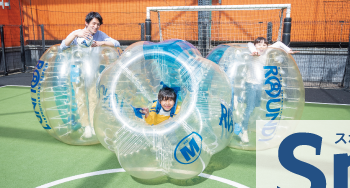Thoughts: Wei Wei Daigakusei
Feb 27, 2022
I had previously written a separate post briefly talking about Yabai T. Most of their songs don’t have English translations, so I thought I would try my best to translate them and talk a bit about what I learned in the process. I’ve also been wanting to keep up with my Japanese, so it’s a win-win. To preface this post (and the rest of them if they come): I’m a hobbyist. I’m missing a lot of linguistic and cultural experience relating to Japan. I’ll try my best, but the translations are not going to be or even aiming to be perfect. This is mostly a learning exercise for me. Anyways, onto the fun stuff!
First on the chopping block is Wei Wei Daigakusei which was released in 2016 as part of Yabai T’s album, We love Tank-top. The song describes a group of 5 college students in the Kansai area living a rowdy and free life instead of studying hard at school. While the premise isn’t exactly unique, Yabai T frames it with a uniquely Kansai spin, including a few callouts to locations that have ties back to Osaka and the Kansai area in general.
Translation Notes
The first few lines of Wei Wei Daigakusei mention two phrases, 産近甲龍 (sankinkouryuu) and 関関同立 (kankandouritsu). These are both acronyms for two groups of famous private universities in the Kansai area.
Sankinkouryuu:
- San: Kyoto Sangyo University
- Kin: Kinki University
- Kou: Kounan University
- Ryuu: Ryuukoku University
Kankandouritsu:
- Kan: Kansai University
- Kan: Kwansei Gakuin University
- Dou: Doshisha University
- Ritsu: Ritsumeikan University
The Sankinkouryuu are a group of 4 semi-elite universities while the Kankandouritsu are a group of 4 elite universities. All 8 are considered quite prestigious and tough to get into though, hence their notability. Of course, these rankings are just for Kansai private universities. Kantou has their own pyramid of prestigious private schools, although I was not able to find definitive information about exactly which ones they were. Beyond these pyramids, there are even more elite schools since Japanese public universities are viewed as more prestigious than private ones. The schools making up what were the imperial universities would probably be considered the most prestigious in the nation.1
Later on, the song also mentions 鳥貴族 (torikizoku) which is a famous izakaya chain. Torikizoku originated in Osaka but has spread out around Hyogo and Tokyo. It appears their specialty is chicken skewers as well as other izakaya fare like alcohol and small bites. Naturally, no Torikizoku exist in the US as far as I’m aware, but the abundance of chicken skewer photos I found both on their Twitter and on other various English-language blogs has started to make my mouth drool. If I ever get the chance to visit Osaka down the line, I’m going to check them out.
Another location mentioned is the スポッチャ (supoccha) or Spo-cha, a portmanteau of the words “sports” and “challenge.” Spo-cha is an indoor, all-you-can-eat (play?) sports complex aimed at both adults and children offered at various Round 1 entertainment centers. They seem to offer a wide variety of activities, from traditional sports like basketball and soccer, to more unorthodox activities like go-kart and full-body-inflatable-ball-thing(?). Some US Round 1’s also have Spo-cha as well with nearly the same list of activities which means this is something that I could realistically try out someday.

Closing Thoughts
Wei Wei Daigakusei was one of my favorite Yabai T songs, even before I dived into the translation, purely based on its tune and theme. There’s something amusing about a high-energy song featuring a bunch of college students going all out with their lives. It also spoke to something that I wish I had during college. Like many others, I spent the latter years of uni stuck at home because of the pandemic. Being able to listen to a fun song about college students and pretend I was with them having a fun campus life during that time was a bit therapeutic in a way.
-
Not every imperial university was in today’s Japan since the Empire of Japan had territory outside of the modern-day country. Two of them actually became the modern-day National Taiwan University and Seoul National University, both of which are still very prestigious. It’s interesting to trace how the past, whether positive or negative, ends up shaping the future like this. ↩